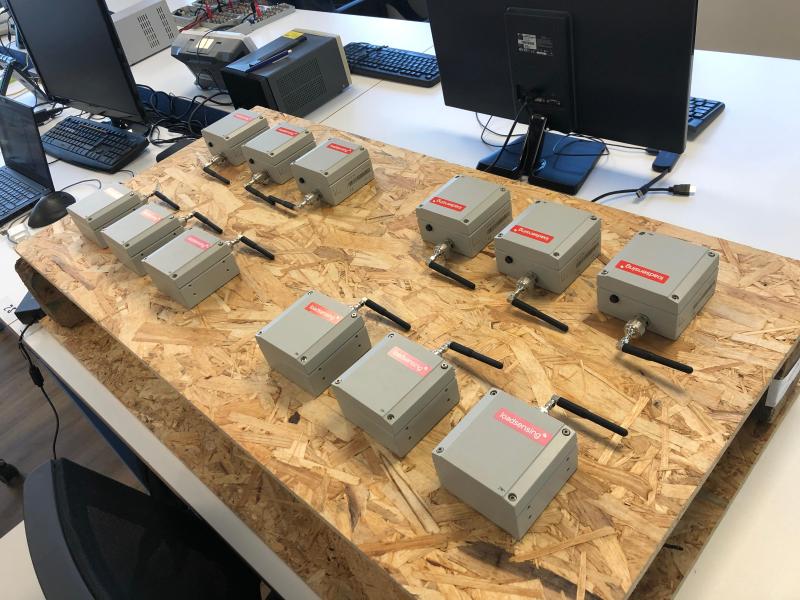A landslide that derailed a train triggers a new approach to safety as a Spanish start-up remote monitoring systems aim to save lives and adapt to climate change
The train line between Lleida and La Pobla de Segur in the rugged country north of Barcelona cuts through mountains and over deep gorges. The line is a critical link in a remote area where local roads seldom travel in straight lines.
On March 12, 2021, as the first train of the day entered a tunnel, a landslide occurred without warning. As the train exited the tunnel, it hit a freshly detached heap of rocks and derailed, right next to a steep cliff.
Fortunately, no one was hurt. But the line was closed for several weeks, and the train required extensive and expensive repairs.
As it began work on the tracks, Ferrocarrils de la Generalitat de Catalunya, the operator of the railway, decided to try something new.
The company engaged a Barcelona-based company called Worldsensing to install a sophisticated system of sensors and wireless data-collection devices that would provide continuous monitoring of conditions outside the tunnel.
The system includes devices that detect any movement in cracks on the cliff face that looms over the line. Other sensors monitor the tracks and the weather conditions. Extreme heat or cold or heavy rains or snow could affect safety. Data is continuously uploaded to a cloud-based platform with an app that can be used remotely, providing early warning in case of danger.
Remote monitoring systems have the potential to save lives and prolong the lifespan of critical and civil infrastructure, such as roads, railways, bridges and tunnels. As climate change increases the frequency of extreme weather events, the importance of such systems is only growing.

‘Internet of Things’ innovation
Albert Tortajada, manager of infrastructure for the railway operator, says he has high hopes for the future of wireless monitoring on the three lines he manages in the Catalonia region.
“In the railway world, safety is first,” he says. “Our vision for the coming years is that there will be more sensors, more monitoring, and more transmission of that data that can protect our passengers and our trains.”
Worldsensing is a pioneer in the use of the “Internet of Things” to create networks that collect and share data on the state of critical infrastructure and large-scale industrial projects, like mining operations. But its networks are even being used to monitor historic and cultural sites, like a graveyard in Barcelona which suffered a landslide that destroyed tombs in 2017.
The company establishes connectivity, often in remote locations, and creates networks using its own “edge devices,” which collect data from third-party sensors wirelessly. Using low-power, wide-area radio transmission (often referred to by the shorthand LPWAN) the Worldsensing LoRA (for long range) networks can be in place for up to 10 years without maintenance.
Marc Janeras is an engineer with the Institute of Cartography and Geology of Catalonia; the institute works with the rail company to monitor the safety of its lines. He was involved in the planning to prevent another accident outside the tunnel. After the installation of cables and anchored metal fencing to physically prevent another landslide, Marc and other engineers from the Institute worked with Worldsensing to plan the monitoring solution.
He says it will take about a year to get the baseline data that will help them understand the “normal” behaviour of the cliffside and to know what signals outside the norm are cause for concern. In the bigger picture, he says he’s excited about the potential for such systems to have a broad impact.
Protecting critical infrastructure
“The classical approach is ‘OK, I study a slope and assess the stability and so on and the work is finished, and we move on to another place’,” he says. “Now with these monitoring networks we are moving from this idea to an overall network where we can learn something from one project and apply it to another.”
The European Investment Bank recognised the potential of Worldsensing’s innovations, which are becoming especially important because of the extremes of weather brought on by the climate crisis. The EU bank financed the company with a €10 million loan to further develop its technology.

Ignasi Garcia-Milà Vidal, Innovation Project Manager at Worldsensing, says one of the key advantages of this type of solution is that it reduces the need for manual readings and measurements over time, saving money and reducing the carbon emissions involved in sending teams to remote sites. But it also delivers real-time data and more sophisticated measurements that are game changing, he says.
“Thanks to these low-power Internet of Things devices, we’re offering the complete digitalization of an entire industry,” he says, “which is geotechnical, geospatial and structural monitoring.”
